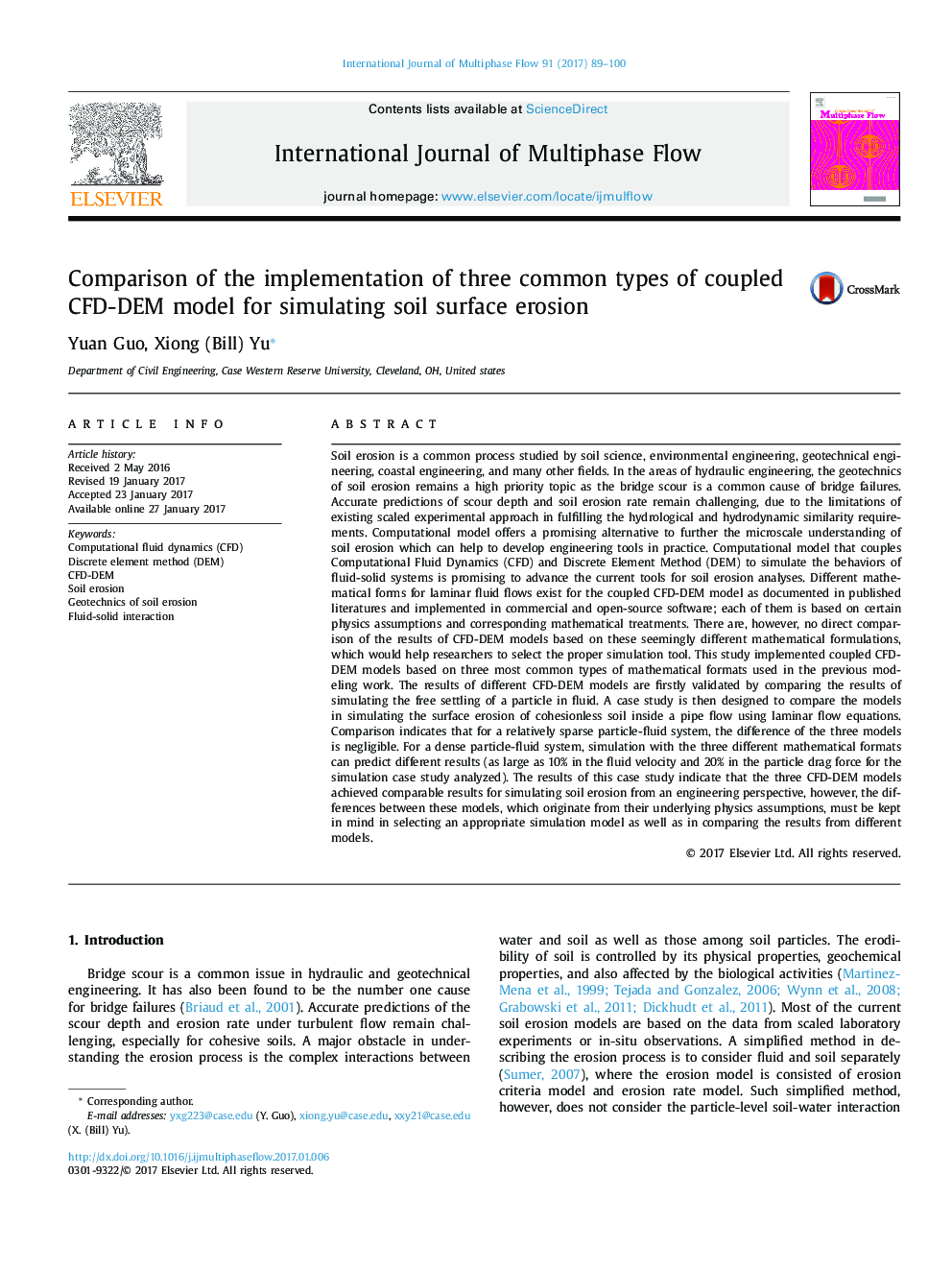| کد مقاله | کد نشریه | سال انتشار | مقاله انگلیسی | نسخه تمام متن |
|---|---|---|---|---|
| 4994968 | 1458487 | 2017 | 12 صفحه PDF | دانلود رایگان |
عنوان انگلیسی مقاله ISI
Comparison of the implementation of three common types of coupled CFD-DEM model for simulating soil surface erosion
دانلود مقاله + سفارش ترجمه
دانلود مقاله ISI انگلیسی
رایگان برای ایرانیان
کلمات کلیدی
موضوعات مرتبط
مهندسی و علوم پایه
مهندسی شیمی
جریان سیال و فرایندهای انتقال
پیش نمایش صفحه اول مقاله

چکیده انگلیسی
Soil erosion is a common process studied by soil science, environmental engineering, geotechnical engineering, coastal engineering, and many other fields. In the areas of hydraulic engineering, the geotechnics of soil erosion remains a high priority topic as the bridge scour is a common cause of bridge failures. Accurate predictions of scour depth and soil erosion rate remain challenging, due to the limitations of existing scaled experimental approach in fulfilling the hydrological and hydrodynamic similarity requirements. Computational model offers a promising alternative to further the microscale understanding of soil erosion which can help to develop engineering tools in practice. Computational model that couples Computational Fluid Dynamics (CFD) and Discrete Element Method (DEM) to simulate the behaviors of fluid-solid systems is promising to advance the current tools for soil erosion analyses. Different mathematical forms for laminar fluid flows exist for the coupled CFD-DEM model as documented in published literatures and implemented in commercial and open-source software; each of them is based on certain physics assumptions and corresponding mathematical treatments. There are, however, no direct comparison of the results of CFD-DEM models based on these seemingly different mathematical formulations, which would help researchers to select the proper simulation tool. This study implemented coupled CFD-DEM models based on three most common types of mathematical formats used in the previous modeling work. The results of different CFD-DEM models are firstly validated by comparing the results of simulating the free settling of a particle in fluid. A case study is then designed to compare the models in simulating the surface erosion of cohesionless soil inside a pipe flow using laminar flow equations. Comparison indicates that for a relatively sparse particle-fluid system, the difference of the three models is negligible. For a dense particle-fluid system, simulation with the three different mathematical formats can predict different results (as large as 10% in the fluid velocity and 20% in the particle drag force for the simulation case study analyzed). The results of this case study indicate that the three CFD-DEM models achieved comparable results for simulating soil erosion from an engineering perspective, however, the differences between these models, which originate from their underlying physics assumptions, must be kept in mind in selecting an appropriate simulation model as well as in comparing the results from different models.
ناشر
Database: Elsevier - ScienceDirect (ساینس دایرکت)
Journal: International Journal of Multiphase Flow - Volume 91, May 2017, Pages 89-100
Journal: International Journal of Multiphase Flow - Volume 91, May 2017, Pages 89-100
نویسندگان
Yuan Guo, Xiong (Bill) Yu,